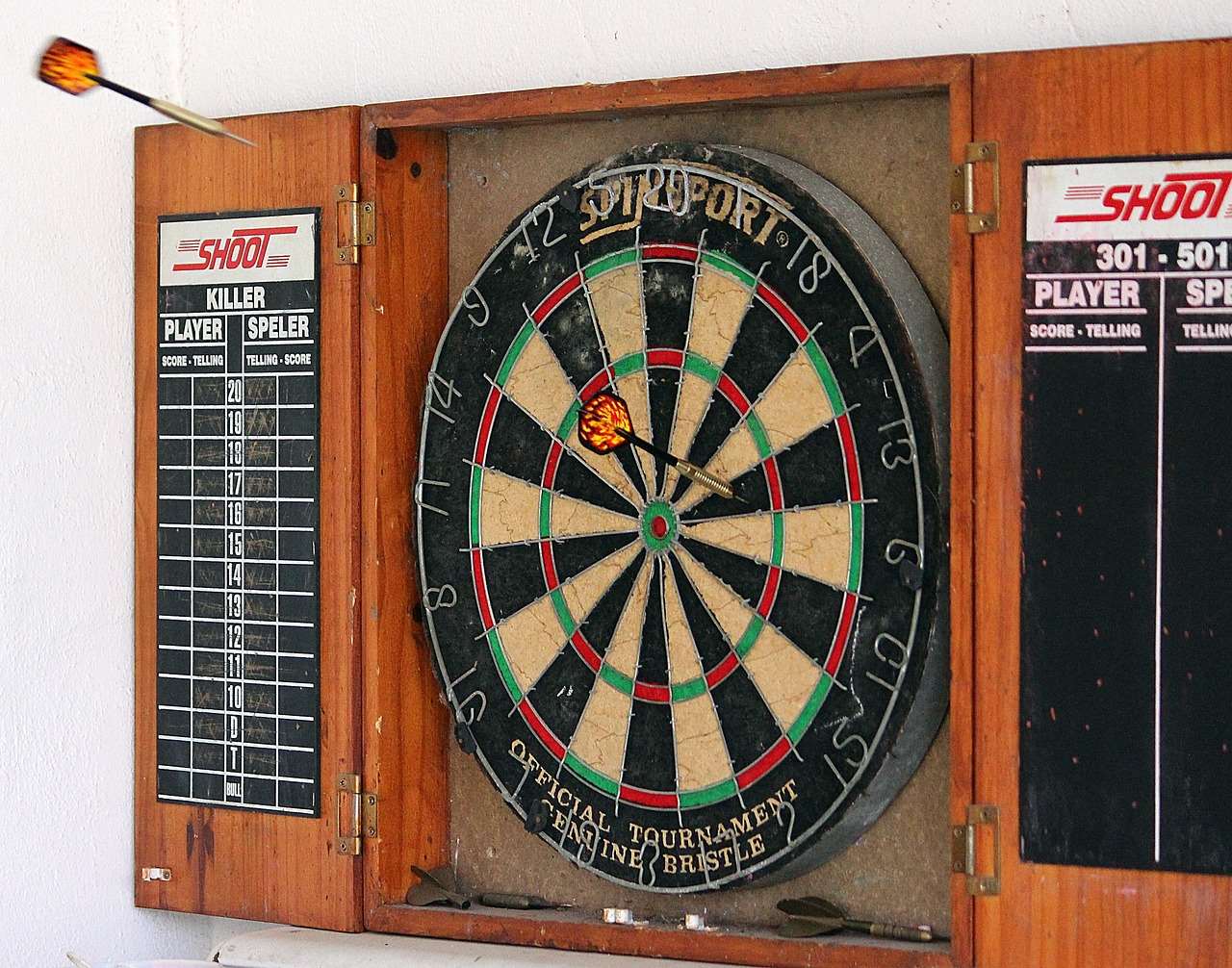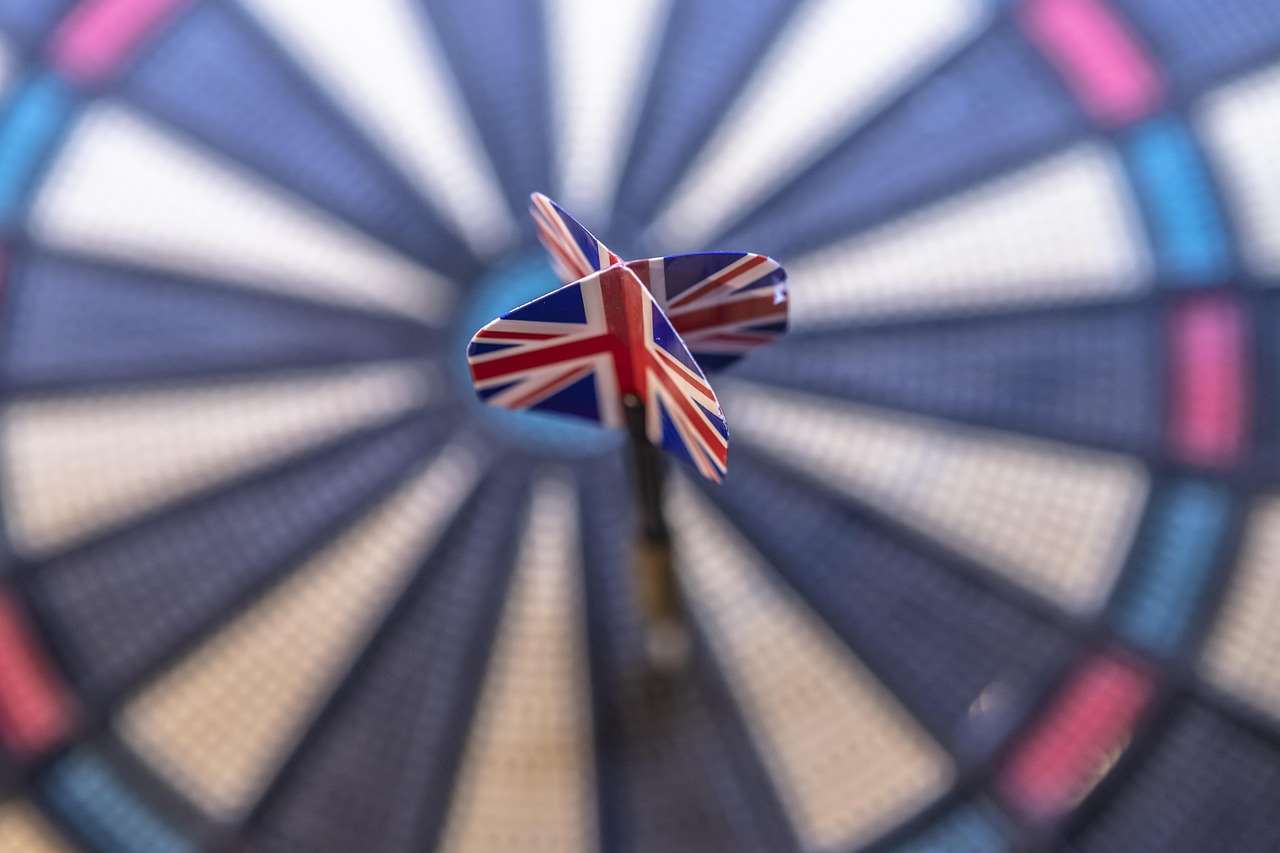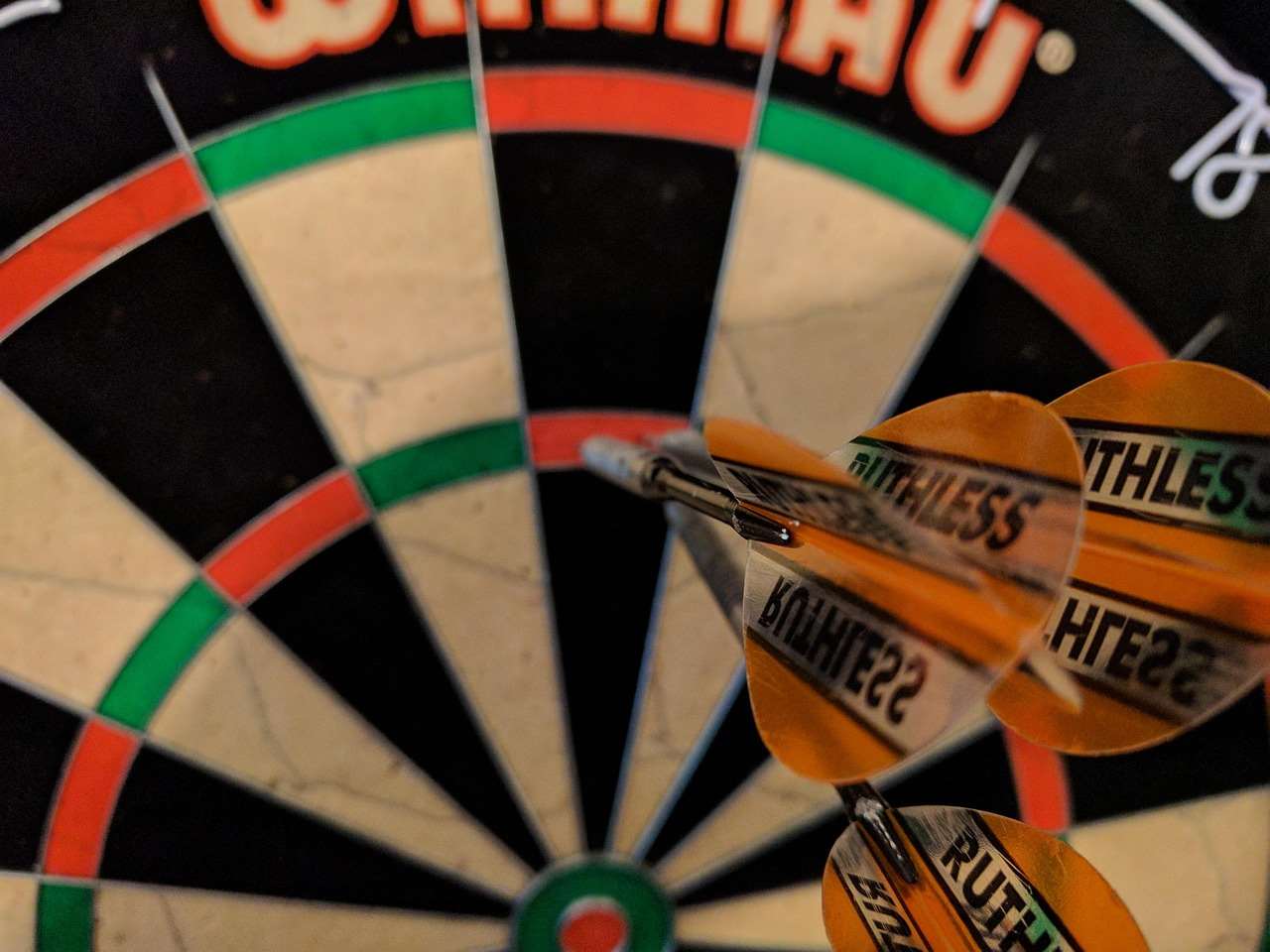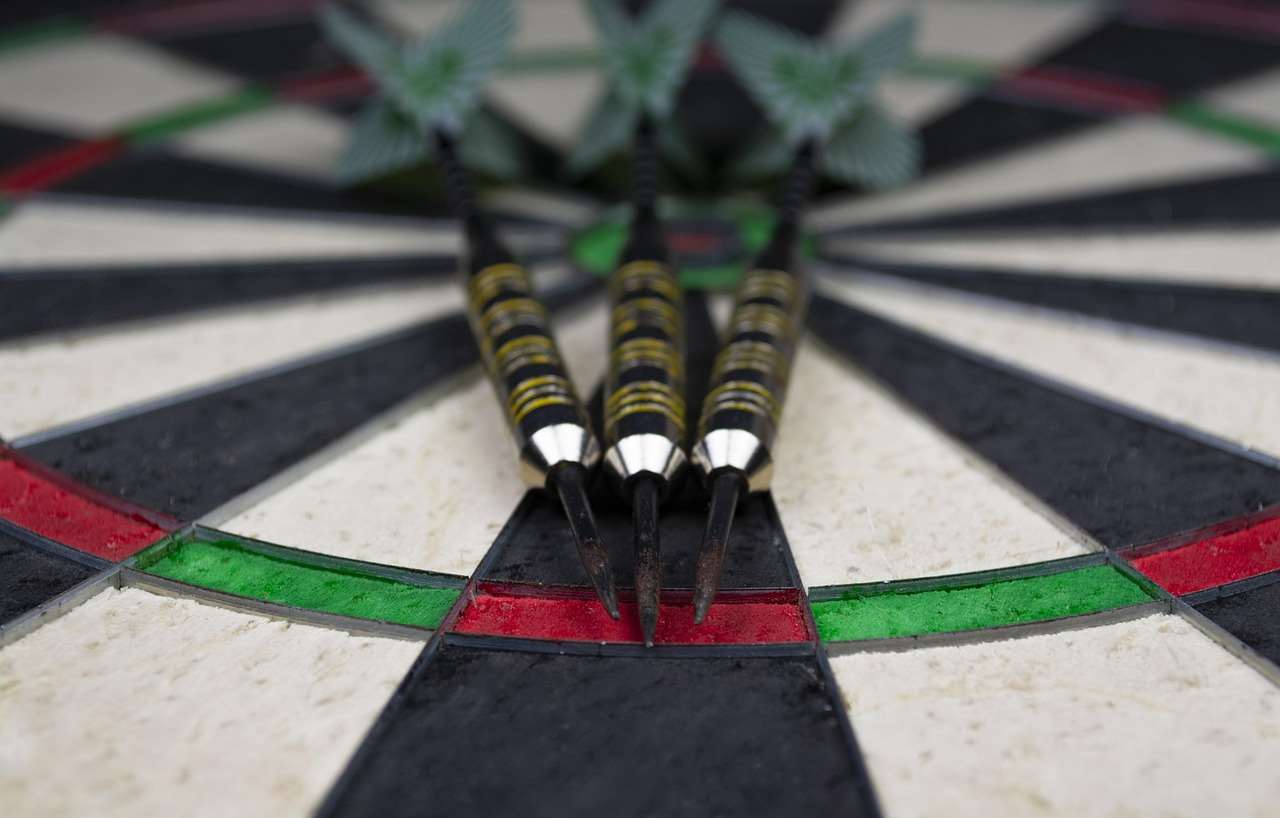Ensuring your dartboard setup meets official standards is crucial for fair play and tournament eligibility, and **checking dartboard dimensions for tournament compliance** is easier than you might think. This article provides a comprehensive guide to accurately measure and position your dartboard according to World Darts Federation (WDF) regulations, covering everything from board height to toe line distance.
⚠️ Still Using Pen & Paper (or a Chalkboard)?! ⚠️
Step into the future! The Dart Counter App handles all the scoring, suggests checkouts, and tracks your stats automatically. It's easier than you think!
Try the Smart Dart Counter App FREE!Ready for an upgrade? Click above!
Why Checking Dartboard Dimensions for Tournament Compliance Matters
If you’re serious about darts, whether playing locally or aiming for bigger tournaments, adhering to official regulations is essential. A properly set up dartboard ensures fairness for all players. Inconsistent dimensions can give some players an unfair advantage, particularly if they’re used to practicing on a regulation board. Moreover, **checking dartboard dimensions for tournament compliance** helps avoid disputes and ensures your scores are valid in competitive settings. It’s about upholding the integrity of the game and respecting the rules.
Even if you’re not a competitive player, using the correct dimensions can significantly improve your game. It allows you to develop consistent throwing techniques and build muscle memory based on the official standards. When you later compete, you won’t need to readjust your stance and throw, giving you a distinct advantage.

What Happens if My Dartboard Isn’t Compliant?
- Disqualification: In tournaments, your scores might be nullified, and you could face disqualification.
- Unfair Play: Creates an uneven playing field, potentially disadvantaging opponents.
- Poor Practice: Practicing on a non-compliant board can hinder your progress and develop bad habits.
Essential Measurements for Tournament-Standard Dartboard Setup
There are three primary measurements you need to verify when setting up your dartboard for tournament play: the **bullseye height**, the **throwing line distance** (oche), and the **dartboard facing angle**. Let’s break each one down:
1. Bullseye Height
The distance from the floor to the center of the bullseye is the most crucial measurement. The official height is 5 feet 8 inches (1.73 meters). To measure this accurately:
- Use a reliable tape measure or laser measure.
- Measure from the floor to the center of the bullseye. It’s helpful to have someone hold the tape measure at the bullseye while you check the floor end.
- Ensure the floor is level. If the floor is uneven, use a leveling tool to compensate.
- Re-measure a few times to ensure accuracy.
It’s crucial to get this measurement correct, as it directly impacts the trajectory of your darts.
2. Throwing Line Distance (Oche)
The throwing line, also known as the oche, is the line players must stand behind when throwing their darts. The distance from the face of the dartboard (vertically below the bullseye) to the front edge of the oche is 7 feet 9 1/4 inches (2.37 meters). Here’s how to measure it properly:
- Hang a plumb bob (a weight on a string) from the bullseye to the floor. This will give you a vertical reference point.
- Measure from the point where the plumb bob touches the floor directly forward to the front edge of the oche.
- Ensure the oche is a straight line and perpendicular to the center of the dartboard.
- The oche itself must be at least 2 feet (61 cm) long.
Many players find it useful to mark the oche with tape or a permanent line to ensure consistent placement.
What about Adapting darts rules for small spaces: tips and tricks? While this article concerns official tournament dimensions, that article helps players facing limited space find suitable alternatives.
3. Dartboard Facing Angle
While not always strictly enforced, the dartboard should ideally face directly towards the throwing line. This ensures that both players have an equal view of the board. To check this:
- Stand at the oche and visually inspect the dartboard.
- Ensure the center of the bullseye is aligned with the center of the throwing line.
- If necessary, make slight adjustments to the dartboard’s position.

Tools Needed for Accurate Measurement
Having the right tools makes **checking dartboard dimensions for tournament compliance** much easier and more accurate. Here’s a list of recommended tools:
- Tape Measure or Laser Measure: A reliable measuring device, preferably one that measures in both feet/inches and meters. A laser measure can be particularly helpful for accurate distance measurements.
- Level: A spirit level to ensure the dartboard is hung vertically straight and the floor is level.
- Plumb Bob: Essential for accurately determining the vertical distance from the bullseye to the floor, needed for oche placement.
- Pencil or Marker: For marking measurements and the position of the oche.
- Straight Edge or Ruler: To ensure the oche is straight.
Step-by-Step Guide: Checking Dartboard Dimensions for Tournament Compliance
Here’s a detailed, step-by-step guide to ensuring your dartboard setup meets tournament regulations:
- Prepare the Area: Clear the space around the dartboard and the throwing area. Ensure the floor is relatively clean and free of obstructions.
- Mount the Dartboard: Securely mount the dartboard on the wall, ensuring it’s firmly attached and won’t wobble.
- Measure Bullseye Height: Use your tape measure to check the distance from the floor to the center of the bullseye. Adjust the dartboard’s position until it’s exactly 5 feet 8 inches (1.73 meters). Use a level to make sure the board is vertical.
- Mark the Oche Position: Hang the plumb bob from the bullseye. Measure 7 feet 9 1/4 inches (2.37 meters) from the point where the plumb bob touches the floor to the front edge of where the oche will be. Mark this line on the floor.
- Install the Oche: Place a physical oche (e.g., a piece of wood, metal, or tape) along the marked line. Make sure it’s straight and at least 2 feet long.
- Check Alignment: Stand at the oche and visually inspect the dartboard. Ensure the bullseye is centered and that the dartboard faces directly towards the throwing line.
- Double-Check Measurements: Re-measure all dimensions to confirm accuracy. It’s always a good idea to have someone else verify your measurements.
This meticulous approach significantly reduces the risk of errors.
Common Mistakes to Avoid When Setting Up Your Dartboard
Several common mistakes can lead to a non-compliant dartboard setup. Here are a few to watch out for:
- Incorrect Bullseye Height: The most frequent error. Take your time and measure carefully.
- Inaccurate Oche Distance: Using a flexible tape measure and not accounting for its sag can lead to errors. Use a stiff measuring tool or a laser measure.
- Uneven Floor: Not accounting for an uneven floor can throw off your measurements. Use a level to compensate.
- Wobbly Dartboard: A loose or unstable dartboard can affect your throws and make accurate play difficult. Ensure the dartboard is securely mounted.
- Ignoring Lighting: Poor lighting can make it difficult to see the dartboard clearly. Ensure adequate lighting is provided, preferably from above and slightly in front of the dartboard.

Impact of Dartboard Material and Construction on Dimensions
While the *dimensions* are standardized, the material and construction of the dartboard can subtly influence play. Bristle dartboards made from sisal fibers are the standard for professional play. They offer good dart retention and self-healing properties. However, the density and composition of the sisal can vary slightly between manufacturers, potentially affecting dart penetration and bounce-outs.
Electronic dartboards, while convenient for scoring, often have different dimensions and target areas compared to bristle boards. They are generally not used in professional tournaments due to these discrepancies.
Remember, if you are looking to learn more about Basic Darts Fundamentals for Beginners, many online resources are available.
Maintaining Your Dartboard for Optimal Performance
Once you’ve ensured your dartboard setup meets tournament standards, proper maintenance is crucial to keep it in optimal condition. Regular maintenance extends the life of your board and keeps your scores accurate.
- Rotate the Dartboard: Regularly rotating the dartboard will evenly distribute wear and tear, preventing certain sections from becoming overly worn.
- Remove Darts Correctly: Always remove darts by twisting them slightly as you pull them out. This helps prevent damage to the sisal fibers.
- Clean the Dartboard: Use a soft brush to remove any loose debris or lint from the dartboard. Avoid using liquids, as they can damage the sisal fibers.
- Avoid Excessive Moisture: Keep the dartboard in a dry environment to prevent mold or mildew growth.
Following these simple maintenance tips will help ensure your dartboard remains in good condition for years to come.
Using Technology to Verify Dartboard Setup
While traditional measuring tools are essential, technology offers alternative methods for verifying your dartboard setup. Laser levels can provide highly accurate horizontal and vertical references, making it easier to align the dartboard correctly. Smartphone apps that use augmented reality (AR) are also emerging, allowing you to overlay virtual guidelines onto your dartboard to check its dimensions. These apps can be particularly useful for visualizing the correct height and oche distance.

The World Darts Federation (WDF) Regulations and Why They Matter
The World Darts Federation (WDF) sets the official standards for dartboard dimensions and setup. Adhering to these regulations is critical for ensuring fair play and tournament eligibility. The WDF regulations are widely adopted by dart leagues and organizations worldwide, making them the gold standard for dartboard setup. By following these guidelines, you can be confident that your dartboard meets the requirements for competitive play.
Understanding the WDF regulations not only ensures compliance but also helps you appreciate the importance of standardization in the sport. It allows you to focus on your game without worrying about potential disputes or inconsistencies in the playing environment. You might even want to explore Fun dart game variations with modified rules once you have your standard setup.
Beyond Dimensions: Other Factors Affecting Tournament Play
While **checking dartboard dimensions for tournament compliance** is paramount, other factors influence the fairness and accuracy of tournament play. These include:
- Lighting: Adequate and consistent lighting is crucial. The dartboard should be well-lit, without glare or shadows.
- Surround: A dartboard surround protects the surrounding wall from stray darts and provides a consistent backdrop.
- Floor Surface: The floor in the throwing area should be flat and stable, ensuring players have a solid stance.
- Dart Weight and Type: While regulations on dart weight and type exist, ensuring all players use compliant darts is crucial for fairness.

Final Thoughts: Ensuring Fair Play Through Precise Measurements
In conclusion, **checking dartboard dimensions for tournament compliance** is not just a formality; it’s a fundamental aspect of ensuring fair play and upholding the integrity of the sport. By understanding the official regulations, using the right tools, and following a step-by-step approach, you can confidently set up your dartboard to meet tournament standards. This allows you to focus on improving your game and competing at your best, knowing that you’re playing on a level playing field.
Take the time to measure, adjust, and maintain your dartboard. Your dedication to precision will not only improve your game but also contribute to a more enjoyable and equitable experience for all players. Now that you understand the importance of proper dartboard setup, take the first step and verify the dimensions of your current setup. Happy darting!
Hi, I’m Dieter, and I created Dartcounter (Dartcounterapp.com). My motivation wasn’t being a darts expert – quite the opposite! When I first started playing, I loved the game but found keeping accurate scores and tracking stats difficult and distracting.
I figured I couldn’t be the only one struggling with this. So, I decided to build a solution: an easy-to-use application that everyone, no matter their experience level, could use to manage scoring effortlessly.
My goal for Dartcounter was simple: let the app handle the numbers – the scoring, the averages, the stats, even checkout suggestions – so players could focus purely on their throw and enjoying the game. It began as a way to solve my own beginner’s problem, and I’m thrilled it has grown into a helpful tool for the wider darts community.